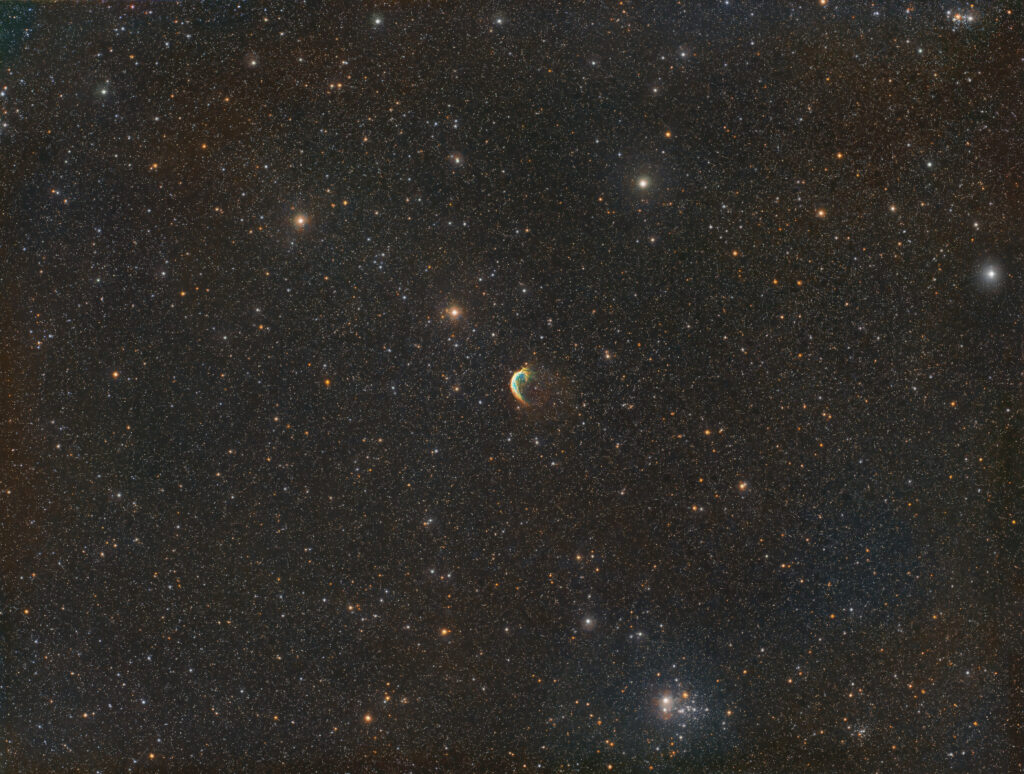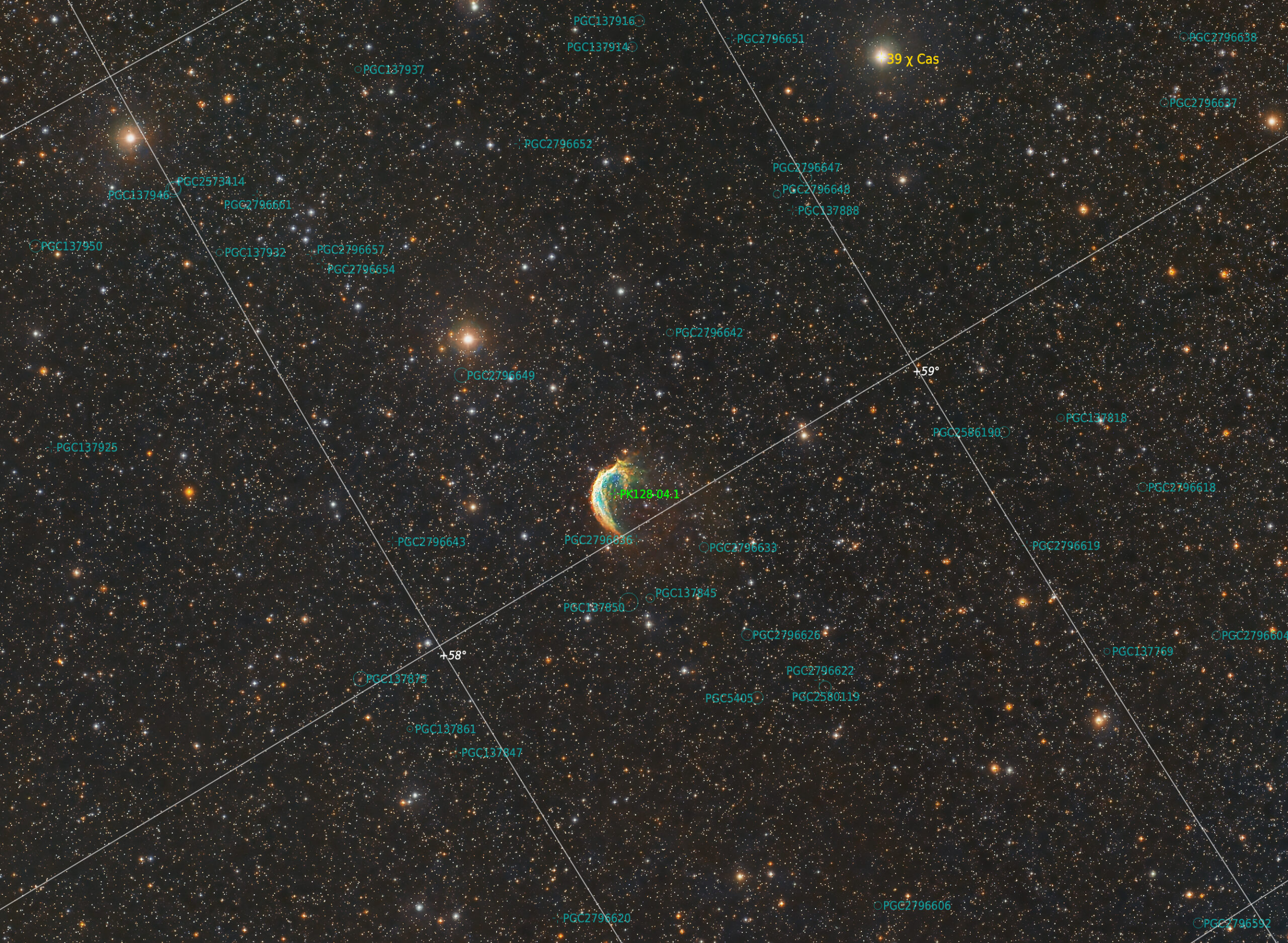
Astrobin:
According to Salter et. Al., 1984 Sh2-188 nebula also known as Simeis 22, seems to have been discussed first by Minkowski in 1958 “Cygnus Loop and Some Related Nebulosities” who considered it to be a possible SNR – Super Nova Remnant.

Shortly thereafter it was included into the Sharpless Catalogue of Hii regions; cfr. Sharpless Stewart, 1959 “A Catologue of H II Regions” IV: 257 http://www.americanroads.us/astronomy_resources/Sharpless_HII_Regions_1959.pdf
where it was noted to be crescent shaped and similar in morphology to Sh2-274 in the catalogue.
Georgelin et Al., 1973 accepted S188 as an Hii region and derived a kinematic distance of 0.99 +or- 0.34 kpc., while Harris 1962, Parker 1964 and Lozinskaya 1970 preferred the SNR identification.
Lozinskaya (1970) derived a nebula expansion velocoty of 35 + or – 2 km Sec-1 from her measurements, and noted a high ratio of [Nii] ot H alpha intensity, as had been prevously found by Parker in 1964, Johnson in 1975, including S188 in the search for a luminous stars near galactic SNRs and again confirmed the high [Nii] to H alpha ratio.
According to Israel and Felli, 1976 observation evinced radio continuum emission from S188 at 1.4 Ghz using Westerbork Synthesis Radio Telescope, thus they concluded from its very low radio to optical flux desity ratio that it could not be an SNR. From their estimations the most probable mass of the nebula is only a few hundreths of a solar mass, suggesting S188 as mostly likely due to mass loss on a moderate scale by a star into a tenous interstellar medium; cfr. Israel F. P, Felli M.: 1976 “Aperture synthesis radio observations of three filamentary nebulae” https://www.researchgate.net/publication/234443013_Aperture_synthesis_radio_observations_of_three_filamentary_nebulae/download
According to Rosado and Kwitter 1982 more recent studies S188 has to be considered a planetary nebula, as they find a high velocity line splitting implying an expansion velocity of 44 + or – 10 km sec-1, in rough agreement with results of Lozinskaya 1970. They also obtained two distance estimations: one of 0.74 Kpc and the second of 1.6 + or – 0.27Kpc; cfr. Rosado M., Kwitter K. B.: 1982 “The filamentary nebula S 188” https://ui.adsabs.harvard.edu/abs/1982RMxAA…5..217R/abstract

